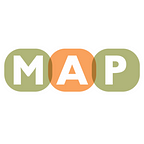LGBTQ Women on International Women’s Day
For more than a century, International Women’s Day (IWD) has been celebrated on March 8 as a day to celebrate and reflect on the social, economic, cultural, and political achievements of women. The day is also a collective call to action for accelerating gender equality in all areas of life.
Women who are lesbian, gay, bisexual, transgender, and/or queer (LGBTQ*) have the same concerns as all people.
They worry about finding and keeping good jobs, saving for the future, taking care of their children and families, and making ends meet. But America’s 5.1 million LGBTQ women face added challenges and worries not just because of their gender, but also because of who they are and whom they love. LGBTQ women of color, transgender women, bisexual women, and LGBTQ women who are parents face particular challenges. For example, federal law still doesn’t prohibit discrimination in public places based on sex or sexual orientation and gender identity. Many states lack laws ensuring fair treatment at work, and increasing religious exemptions threaten LGBTQ women’s access to healthcare, social services, and recognition of their families.
As stated by OutRight Action International’s Jessica Stern, “International Women’s Day should be about inclusivity of the diversity of women — whether lesbian, bisexual, trans, intersex or queer (LBT+); women of colour; women from diverse social and economic backgrounds, religions and families; women with a range of physical abilities; and gender non-conforming people.”
To illuminate the experiences of women who are hidden in larger discussions of gender equality on International Women’s Day, here are some stats from MAP and our colleagues at The Williams Institute about LGBTQ women:
- The top states for LGBT women as a proportion of the total population are: Massachusetts, Oregon, Washington, Vermont, and Washington, D.C. In these states, 6% or more of the population is comprised of LGBT women. When it comes to LGBTQ equality, these states have high ranks in their LGBTQ policy tally scores.
- Women are more likely than men to identify as LGBTQ, and 58% of LGBT people in the US are women.
- 39% of LGBTQ women are raising kids.
- 42% of LGBTQ women are women of color.
- 31% of LGBTQ women experienced food insecurity in the past year, compared to 17% of non-LGBT women.
- In 2016 MAP released an infographic on the experiences of LGBTQ women in America’s prisons and jails, which shows how LGBTQ women and girls are overrepresented in the criminal and juvenile justice system:
Additionally, a new report from the U.S. Commission on Civil Rights emphasizes the bleak picture of the conditions of confinement for incarcerated women, who are disproportionately women of color and LGBTQ people. Findings from Women in Prison, Seeking Justice behind Bars include:
- LGBTQ women in prison are at a greater risk for their physical safety and healthcare needs being met than all women as a group.
- Transgender people report often being placed in facilities which do not conform to their gender identity, but rather their biological assignment at birth.
- Prisons inappropriately use segregation as a purported means of protection for LGBTQ people and people who report sexual assault, which amounts to additional punishment for these incarcerated people.
Click here to access Women in Prison: Seeking Justice behind Bars.
These stats point to the increasing visibility and diversity of LGBTQ women, while also highlighting the inequality they face in different stages and areas of life. You can learn more about the experiences of LGBTQ women on International Women’s Day by visiting lgbtmap.org/lgbtq-women.
- While most survey questions use LGBT and do not include queer, we use LGBTQ to recognize the full range, complexity, and varied experiences of the LGBTQ community.
